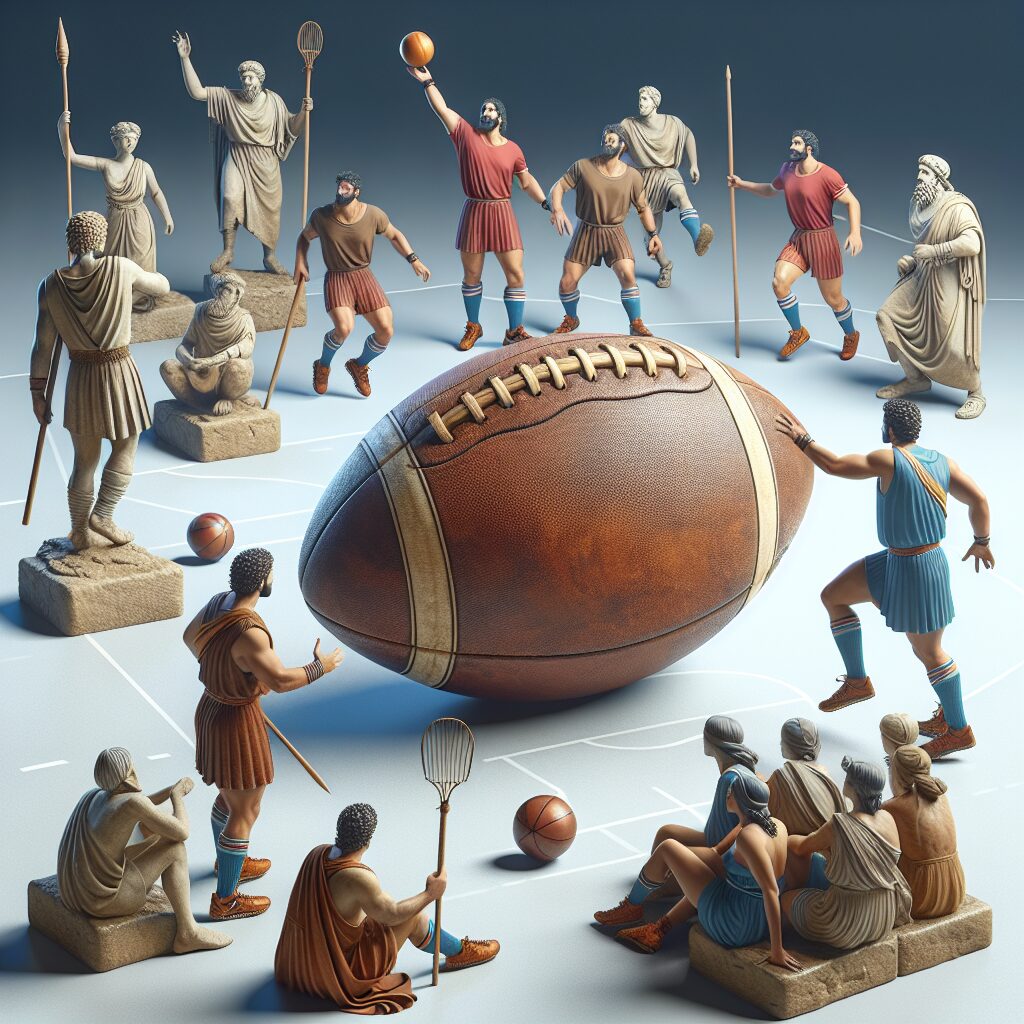Player Performance: The Role of Ball Color
When it comes to the game of soccer, various factors can significantly impact a player’s performance on the field. One such factor that may often go unnoticed is the color of the ball used during the game. Yes, the color of the ball can have a significant impact on the way players perceive and interact with it. Research suggests that the color of the ball can influence players’ reaction times, depth perception, and overall performance on the field.
Studies have shown that the color of the ball can affect a player’s reaction time, particularly when it comes to goalkeepers. For example, research has found that goalkeepers may be slower to react to shots taken with colored balls compared to white ones. The reason behind this is that colored balls tend to blend in with the background or surroundings, making it harder for goalkeepers to track them visually. This delay in reaction time can make a crucial difference in saving a goal or missing the opportunity.
Furthermore, the color of the ball can also impact depth perception for both field players and goalkeepers. When players are visually perceiving the ball, the color can play a role in determining its distance and trajectory. Studies have shown that, as compared to white balls, colored balls can create an illusion of being closer or farther away, affecting players’ judgments of timing and distance. This can lead to mistimed passes, poorly executed shots, and overall reduced performance.
In the upcoming sections, we will explore the key takeaways related to the role of ball color in player performance. We will delve deeper into the impacts of different colors on reaction time and depth perception, discuss strategies to optimize performance regardless of ball color, and explore potential improvements in ball design to mitigate these effects. So, join us as we uncover the importance of ball color and its influence on the game of soccer.
Key Takeaways
1. Ball color can significantly impact player performance in sports such as tennis, cricket, and soccer.
2. Researchers have found that players tend to have better accuracy and performance when playing with balls of brighter colors.
3. The color contrast between the ball and the playing surface can affect players’ ability to track and anticipate the ball’s movement.
4. The impact of ball color on performance varies depending on the specific sport and individual player characteristics, such as age and experience.
5. Sports governing bodies should consider the findings regarding ball color when designing equipment regulations and guidelines to ensure fair and optimal conditions for players.
What is the Impact of Ball Color on Player Performance?
The Psychological Influence of Ball Color
The color of a sports ball can have a significant psychological impact on player performance. Various studies have explored how different colors can affect athletes’ mood, focus, and confidence levels during a game. For example, research suggests that bright colors like red and yellow can evoke feelings of intensity, aggression, and excitement, potentially enhancing performance in sports requiring a high level of energy and motivation. On the other hand, softer colors like blue and green are believed to have a calming and soothing effect, promoting focus and concentration in precision-based sports. Understanding the psychological influence of ball color can help players and coaches strategically choose the most suitable ball color for optimal performance.
Visual Perception and Reaction Time
The color of a ball also plays a crucial role in visual perception, which directly affects reaction time in sports. Studies have shown that certain color combinations, such as yellow and black, provide superior contrast against various backgrounds, making the ball more distinguishable and enhancing overall visual perception. This improved visibility can lead to quicker reactions and better anticipation of the ball’s trajectory, particularly in fast-paced sports like tennis, soccer, or baseball. Consequently, athletes who are exposed to balls with highly contrasting colors might enjoy a competitive advantage due to their enhanced reaction time.
Environmental Factors and Ball Color
The impact of ball color on player performance can be further influenced by environmental factors. For instance, the brightness of natural or artificial lighting conditions on the playing field can interact with the ball color, affecting visibility and players’ ability to track and react to the ball effectively. In outdoor sports, the color of the playing surface and the surrounding environment can also impact how the ball stands out or blends in. Taking into account these environmental factors becomes crucial when selecting a ball color that maximizes visibility and performance under specific playing conditions.
Individual Differences and Perceptual Preferences
It’s important to acknowledge that the impact of ball color on player performance may vary between individuals. Factors such as personal preferences, cultural background, and past experiences can shape athletes’ perception and preferences for certain ball colors. What works optimally for one player might not have the same effect on another. Therefore, coaches and athletes should consider individual differences when selecting ball colors and be open to experimentation to determine the optimal color for each player’s performance.
How to Optimize Player Performance with Ball Color? (Numbered Tips)
- Conduct player surveys or interviews to understand individual color preferences and their potential psychological impact.
- Experiment with different ball colors during training sessions to identify which color promotes better focus, confidence, and performance for each athlete.
- Consider the sport-specific requirements and playing conditions when selecting ball colors. Bright and stimulating colors may be advantageous for high-energy sports, while softer, calming colors may be more suitable for precision-based sports.
- Pay attention to the contrast between the ball color and the playing surface/environment to ensure optimal visibility.
- Stay informed about research and studies exploring the impact of ball color on player performance as new findings may emerge.
Frequently Asked Questions
1. What is the role of ball color in player performance?
The role of ball color in player performance refers to the impact that the color of the ball can have on various aspects of a player’s performance in a sport. Different colors of balls can influence factors such as visibility, contrast, and perception, which in turn affect a player’s performance.
2. Does the color of the ball affect player visibility on the field?
Yes, the color of the ball can greatly affect player visibility on the field. Brightly colored balls, such as fluorescent or high-contrast colors, are generally easier to spot against the background, enhancing visibility and reducing the chances of missing the ball during gameplay.
3. Are there any specific ball colors that are proven to improve player performance?
While there are no specific ball colors that have been scientifically proven to universally improve player performance, certain color combinations and contrasts may work better for certain sports and environments. It is essential to consider factors like lighting conditions, field color, and individual preferences when selecting ball colors.
4. Can the color of the ball affect a player’s perception of speed?
Yes, the color of the ball can influence a player’s perception of speed. Research suggests that lighter colored balls may appear to travel faster than darker colored ones. This perceived speed can impact a player’s reaction time and decision-making on the field.
5. Does playing with a ball of a certain color enhance accuracy in sports?
While ball color alone may not directly enhance accuracy, it can indirectly impact a player’s accuracy. For instance, using a ball with a high-contrast color against the playing surface can help players judge distances more accurately, leading to better shot placement or passing accuracy.
6. Are there any psychological effects associated with ball color on player performance?
Yes, there can be psychological effects associated with ball color on player performance. Certain colors may evoke different emotions, such as red being associated with intensity or aggression. These psychological effects can indirectly influence a player’s performance and mindset during gameplay.
7. Can the color of the ball affect player fatigue levels?
There is limited scientific evidence suggesting that the color of the ball can influence player fatigue levels. However, some studies indicate that playing with a high-contrast colored ball may reduce eye strain and mental fatigue, thus potentially improving overall player endurance.
8. Do professional players have any color preferences for their game balls?
Color preferences among professional players can vary greatly. Some athletes might have personal preferences, while others may adapt to the standard color choices established by sports authorities. Ultimately, it depends on individual preferences, performance requirements, and the sport’s regulations.
9. What considerations should be made when choosing ball color for training or practice sessions?
When selecting ball colors for training or practice sessions, it is crucial to consider the environment and lighting conditions in which the sessions will take place. Choosing high-visibility colors that stand out against the background can facilitate better tracking and skill development.
10. Can the color of the ball have any impact on spectators’ experience?
Yes, the color of the ball can impact spectators’ experience, especially in sports with larger viewing audiences. Bright, contrasting ball colors can help spectators track the game more easily, enhancing their overall enjoyment and engagement with the sport.
Final Thoughts
The role of ball color in player performance is a fascinating aspect of sports that goes beyond mere aesthetics. While there may not be universally optimal ball colors, the significance of visibility, contrast, and perception cannot be overlooked. Understanding the potential impact of ball color can aid players, coaches, and sports equipment manufacturers in optimizing performance and creating an immersive experience for both participants and spectators.
Moreover, it is crucial to remember that while ball color can play a role, it is just one of the many factors influencing player performance. Skill, strategy, and physical conditioning remain paramount in achieving success in any sport. Continual research and innovation can further enhance our understanding of the role of ball color, contributing to the ongoing evolution of sports performance.




